
Success Stories in Documentation
|
October 8, 2025
|
7 Steps to Create an Effective Recruitment SOP Template
Overview
You might be wondering how to create an effective Recruitment Standard Operating Procedure (SOP) template. Well, this article lays out a systematic approach that emphasizes the importance of:
- Defining your SOP's purpose
- Involving stakeholders
- Regularly reviewing and updating the document
By detailing clear steps for each phase of the recruitment process and incorporating feedback from users, it shows how a well-structured SOP can really enhance compliance, standardization, and the overall candidate experience. Ultimately, this leads to more efficient hiring practices—who wouldn’t want that? Now, let’s dive into how you can make this work for you!
Key Highlights:
- Define the purpose of the Recruitment SOP by setting goals such as standardising practises, ensuring compliance, and enhancing candidate experience.
- Outline the scope of the SOP, specifying which roles and departments it covers to provide clarity.
- Gather existing hiring documents and consult with HR and hiring managers to align strategies with organisational objectives.
- Involve key stakeholders in the development process to encourage collaboration and gather valuable feedback.
- Write the SOP with clear steps including defining job requirements, posting advertisements, screening applications, conducting interviews, making hiring decisions, onboarding, and reviewing effectiveness.
- Test the SOP with a pilot group to identify clarity issues and gather feedback for revisions.
- Implement the SOP through comprehensive training sessions, utilising various methods to cater to different learning styles.
- Establish a review schedule for the SOP every 6 to 12 months to ensure it remains relevant and effective, documenting changes and communicating them clearly.
Introduction
Creating a recruitment standard operating procedure (SOP) is super important for organizations looking to streamline their hiring processes and make candidate experiences better. You might be wondering how to go about it, right? This guide lays out seven key steps that not only make it easier to develop an effective recruitment SOP template but also help ensure compliance and consistency across different departments.
But here's the kicker: how do you strike a balance between being thorough and staying adaptable? How can organizations build a structured yet flexible framework that evolves with their hiring needs? Let’s explore this together!
Define the Purpose and Scope of Your Recruitment SOP
You might be wondering where to begin with your recruitment SOP template. So, let’s kick things off by thinking about the main goals you want to achieve. Are you looking to:
- Standardize recruitment practices
- Ensure compliance
- Enhance the candidate experience
Once you have that figured out, it’s time to outline the scope. This means specifying which roles and departments the SOP will cover. For example, you could say this SOP applies to all recruitment processes within the HR department for full-time positions. This kind of clarity will really help shape the next sections of your SOP.
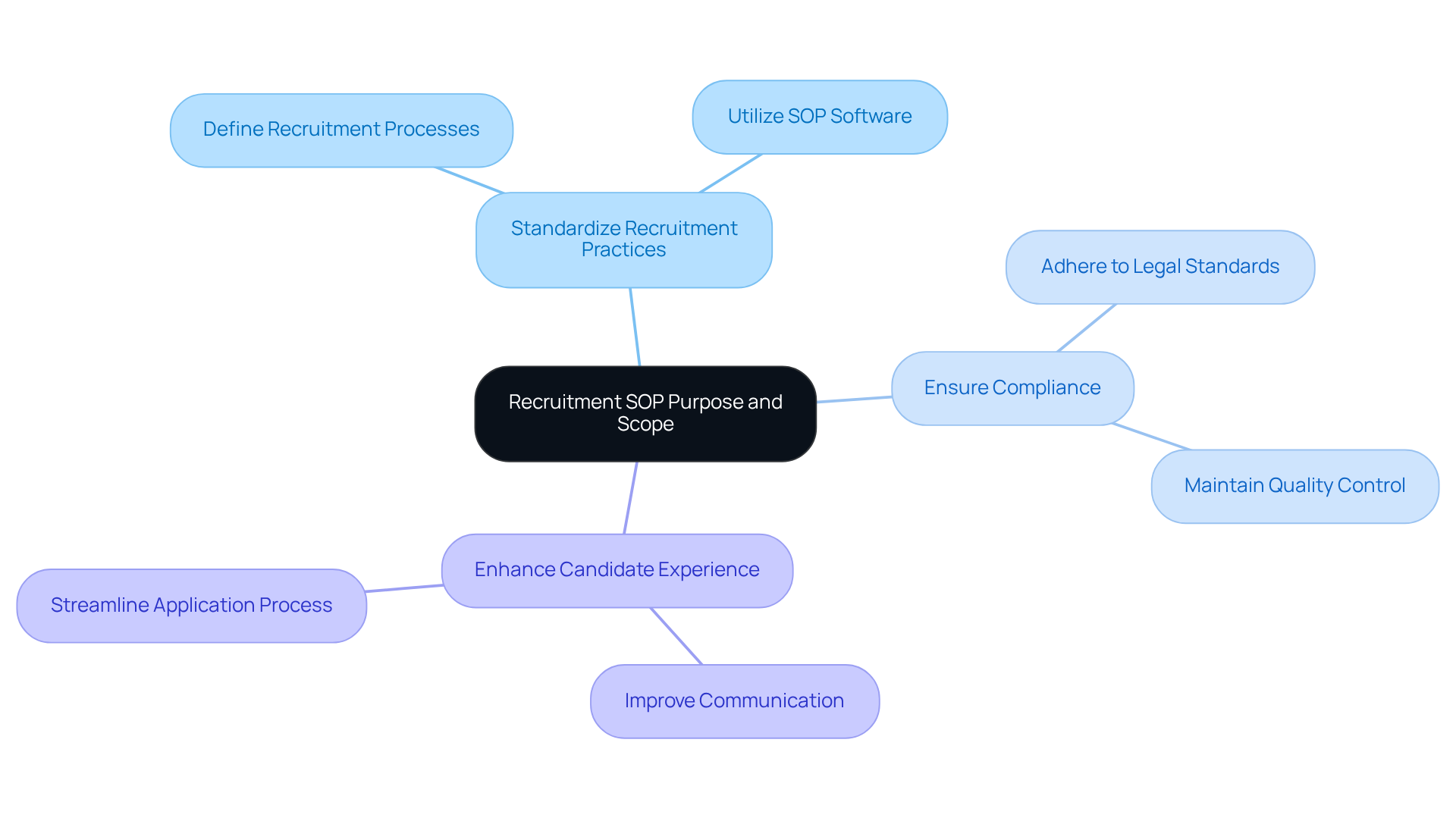
Gather Necessary Information and Resources
You might be wondering where to start with your hiring documents. Well, begin by taking a good look at what you already have—think job descriptions, interview guides, and evaluation criteria. It’s a great idea to chat with your HR team and hiring managers to get their take on current practices and the challenges they’re facing. As HR specialists often point out, "A thorough evaluation of current documents is essential for aligning hiring strategies with organizational objectives."
Now, let’s dive into industry standards and best practices for hiring SOPs. This way, you can make sure you’re on the right track with effective methodologies. Did you know that organizations using centralized staffing documents see a 30% boost in employment efficiency and candidate satisfaction? Pretty impressive, right?
Once you’ve gathered all that valuable data, put it together in a centralized document. Tools like recruitment management software or a recruitment SOP template can make this process a breeze, ensuring easy access during the writing phase. This thorough method not only helps you understand the current structure but also highlights areas for improvement. Ultimately, this leads to more efficient recruitment strategies and better experiences for candidates. So, are you ready to enhance your hiring process?
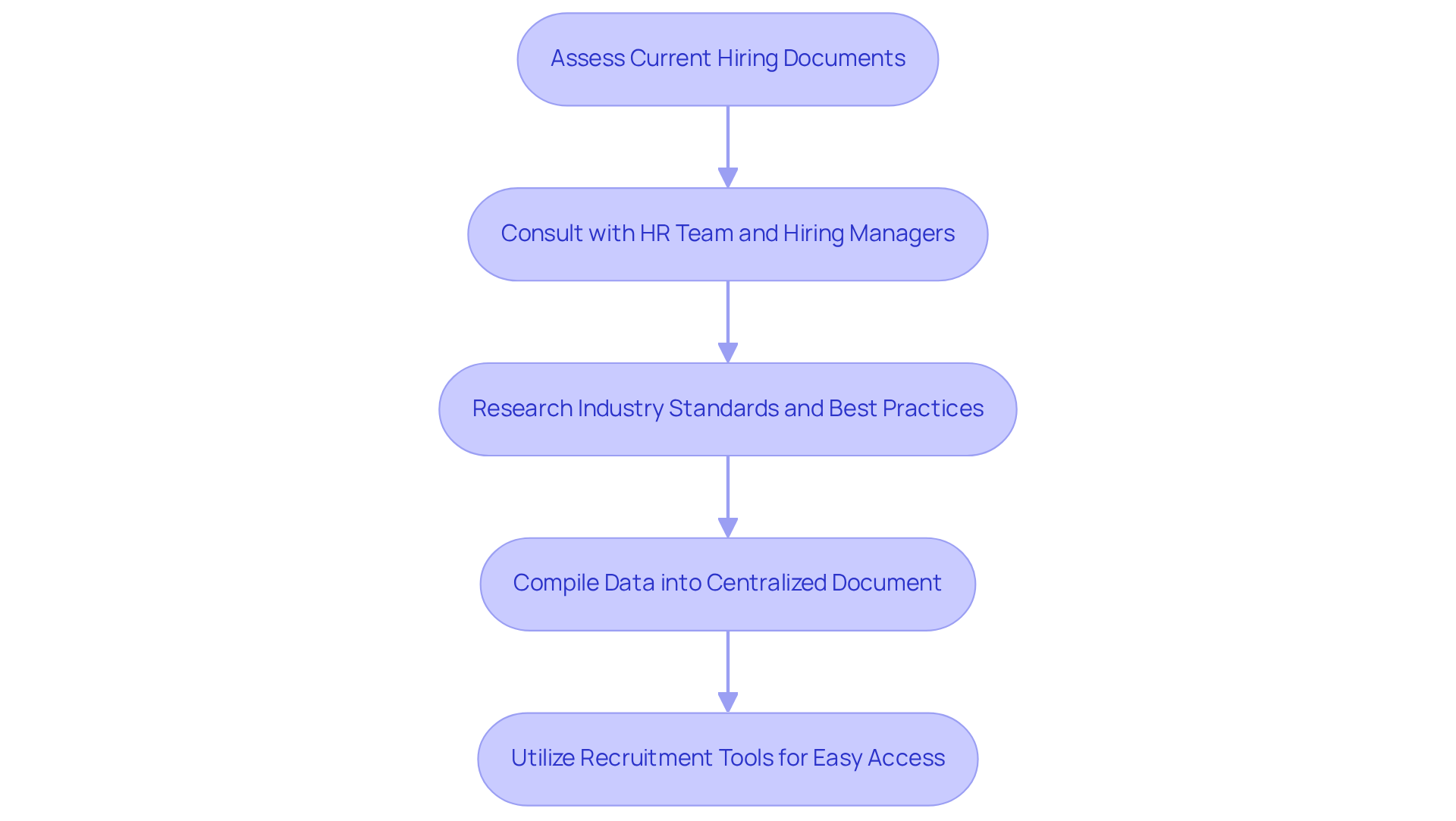
Involve Stakeholders in the Development Process
You might be wondering how to get everyone on board with your recruitment SOP template. Start by identifying key stakeholders like HR personnel, hiring managers, and department heads. Arrange some meetings or workshops where you can chat about the goals of the SOP and gather their thoughts on the hiring method. It’s super important to encourage open dialogue—this is your chance to address any concerns or suggestions they might have. Make sure to document their feedback and incorporate it into the recruitment SOP template; this way, it aligns with what everyone needs.
Now, let’s think about the benefits of this collaborative approach. Not only does it boost the effectiveness of your recruitment SOP template, but it also helps foster a sense of ownership among team members. This can lead to smoother implementation and adherence. Speaking of that, consider using tools like survey software or collaborative platforms to gather feedback. And don’t forget to incorporate ongoing training sessions into the SOP development framework—continuous improvement is key, right? So, let’s keep the conversation going and make that SOP the best it can be!
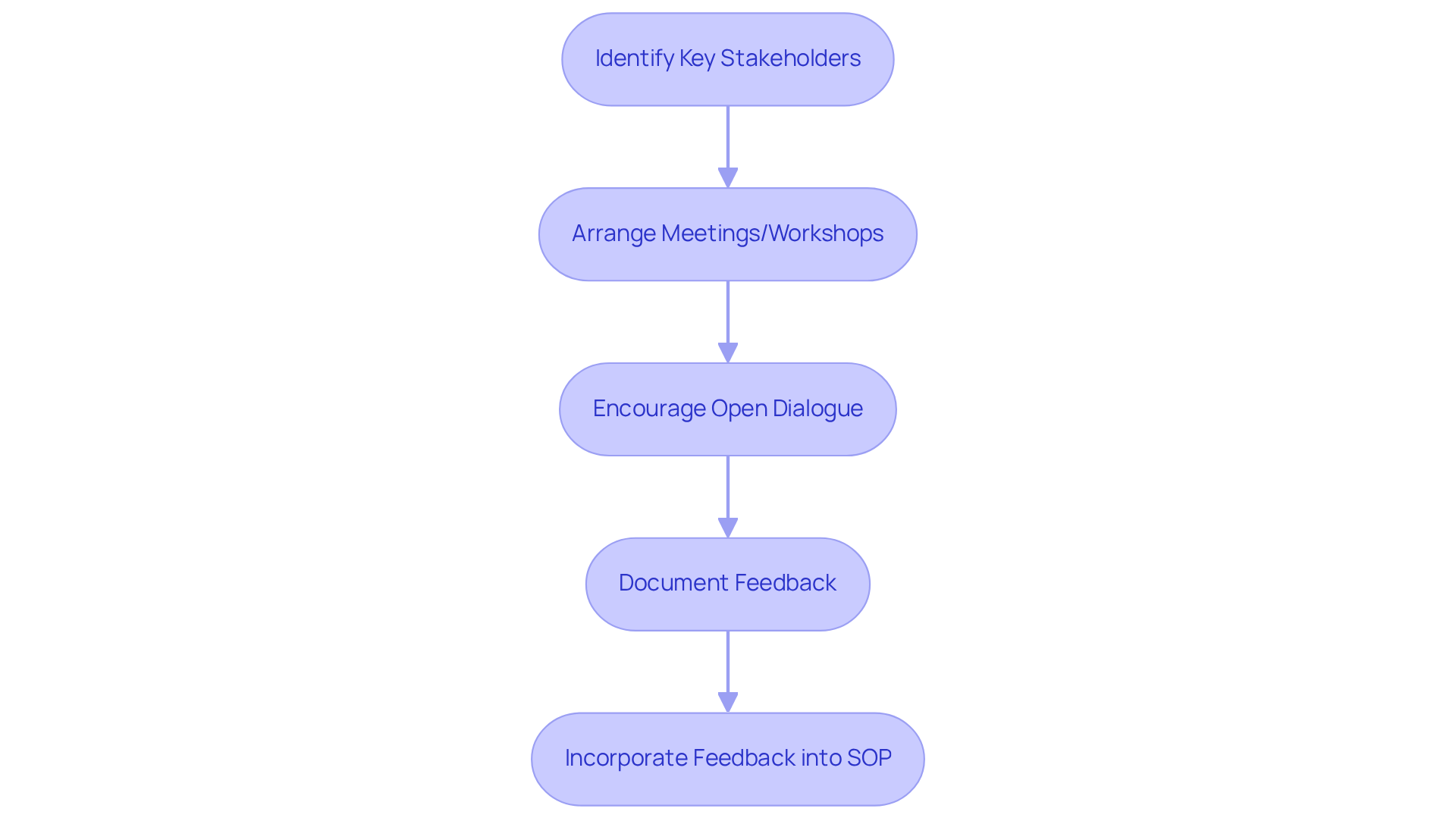
Write the Recruitment SOP with Clear Steps
Creating an effective recruitment SOP template can seem like a daunting task, but it doesn’t have to be! Let’s break it down step by step, ensuring clarity and conciseness along the way. You might find that using bullet points or numbered lists makes everything more readable. Here’s a structured approach to get you started:
- Define Job Requirements: What skills, qualifications, and experience do you need for the position? Clearly outlining these requirements sets the stage for the entire recruitment process.
- Post Job Advertisement: Where should you post the job? Think about company websites, job boards, and social media channels. Make sure your ad is engaging and accurately reflects the role to attract the right candidates.
- Screen Applications: How will you evaluate applications? Establishing criteria is key. This may involve reviewing resumes and cover letters to shortlist candidates who meet your defined requirements.
- Conduct Interviews: Time for interviews! Create a standardized interview method with structured questions to assess candidates’ qualifications and fit for the role. Panel interviews can also provide diverse perspectives—something to consider!
- Make a Hiring Decision: After the interviews, it’s decision time. Gather feedback from all interviewers and make a collective choice. Documenting your rationale ensures transparency, which is always a good practice.
- Onboard the New Hire: Now that you’ve made your choice, it’s time to onboard your new hire! A comprehensive onboarding plan should include training schedules, introductions to team members, and access to necessary resources. A well-structured onboarding process can really boost retention rates.
- Review and Enhance: Don’t forget to regularly evaluate how effective your hiring SOP is! Collect feedback from everyone involved and analyze metrics like time-to-hire and candidate satisfaction. Ongoing enhancement is essential to keep up with evolving hiring needs.
Each step should specify actions, responsible parties, and timelines to ensure accountability and efficiency. As HR experts often say, having clear steps in a recruitment SOP template not only simplifies the hiring process but also enhances the overall candidate experience. This is crucial for organizations looking to attract top talent. Plus, did you know that the average cost-per-hire is $4,700? And 78% of job seekers expect a clear timeline for the hiring process! That really emphasizes the importance of organized hiring practices.
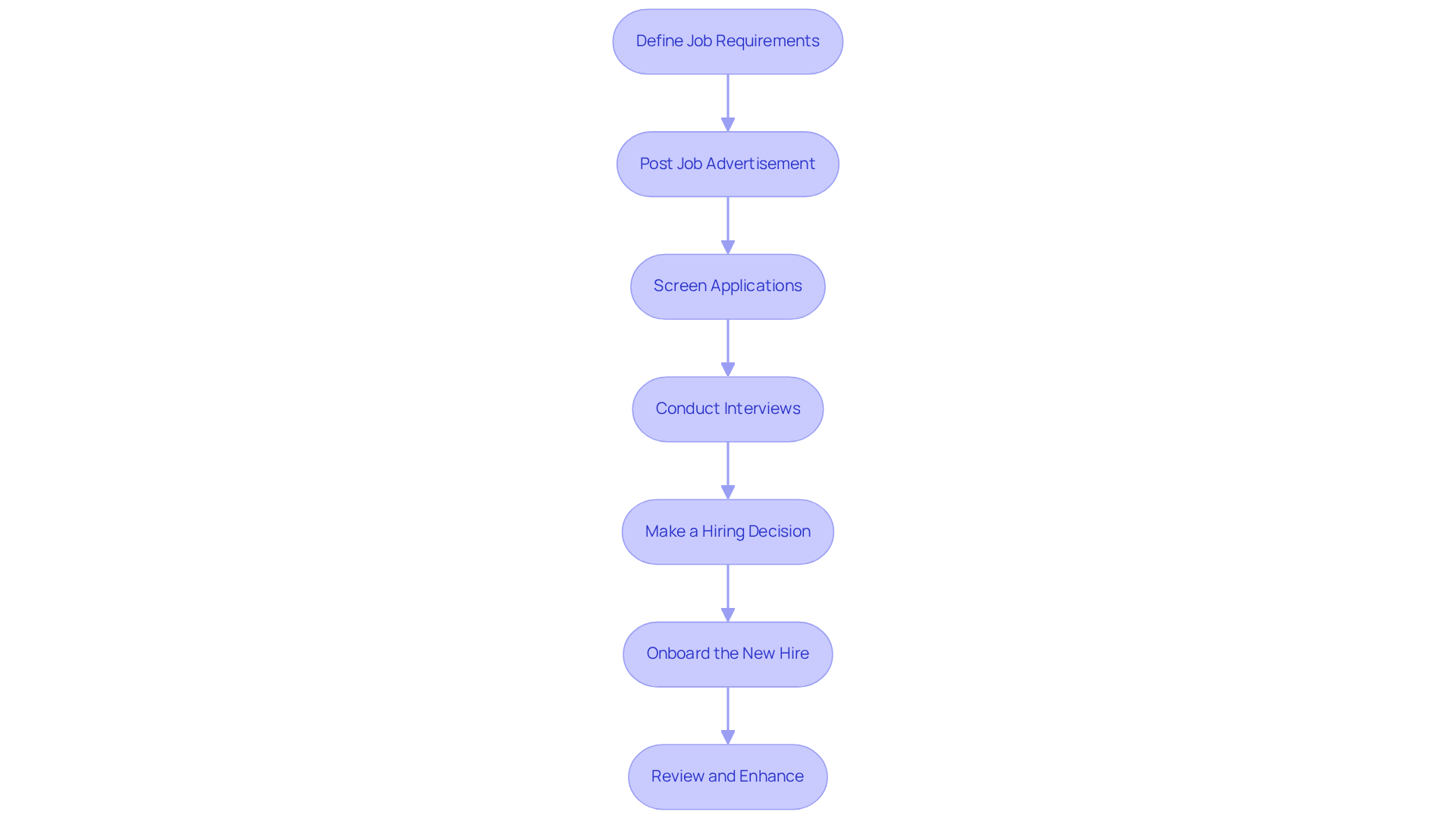
Review, Test, and Revise the SOP
Once you've wrapped up that draft, you might be wondering what comes next. It's super important to share the SOP with stakeholders to get their thoughts. How about conducting a pilot test with a small group of users in a real hiring scenario? This can really help you evaluate things in a practical way. It's a key step because it helps you spot any clarity issues, usability hiccups, or unexpected challenges that might pop up. Plus, gathering feedback from participants not only shines a light on areas that could use some tweaking but also boosts the SOP's effectiveness.
Now, according to HR experts, bringing in feedback during the development phase is crucial for crafting a solid SOP that truly meets your organization's needs. By revising the SOP based on this feedback, you ensure it's practical and effective, paving the way for smoother implementation and better outcomes. So, what are you waiting for? Let's dive into making that SOP shine!
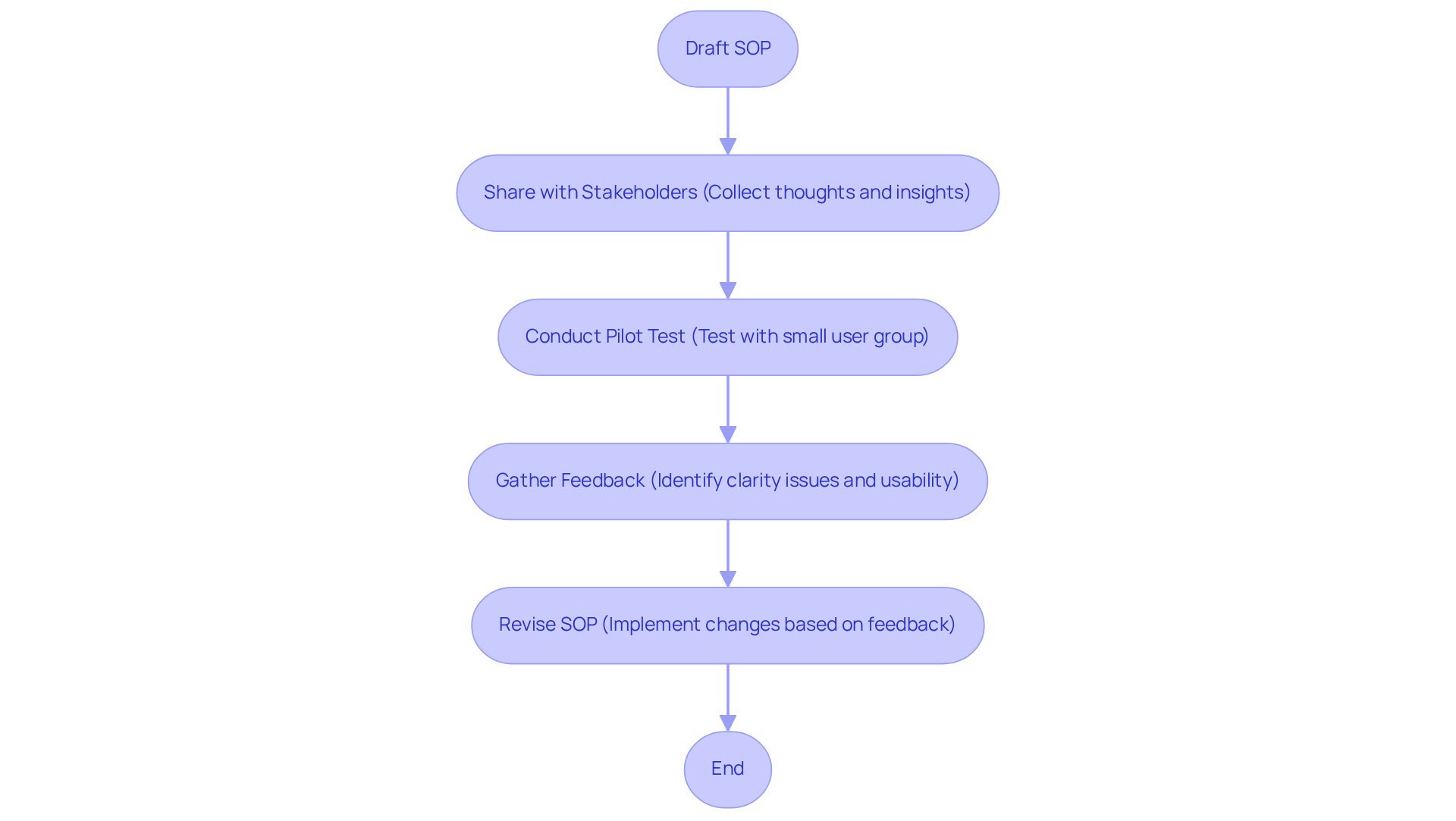
Implement the Recruitment SOP and Train Users
You might be wondering how to effectively implement the hiring SOP. Well, one key step is to organize a comprehensive training session for everyone involved in the hiring process. Think about using a mix of training methods—like workshops, webinars, and one-on-one sessions—to cater to the different learning styles of your team. Did you know that around 65% of people are visual learners? That means they soak up information much better when it's presented visually. So, incorporating infographics and videos can really boost understanding and retention. In fact, individuals remember 42% more when information is shown visually rather than just read in text.
Don’t forget to distribute copies of the SOP along with handy supplementary materials, like checklists and a recruitment SOP template, so users have everything they need at their fingertips. Creating an interactive environment is crucial—invite questions and encourage discussions. This not only clears up any confusion about the new procedures but also helps everyone feel more confident about the SOP.
Now, speaking of visuals, studies have shown that people perform tasks a whopping 323% better when they have visual guidance instead of just written instructions. That’s pretty impressive! Plus, visuals are processed about 60,000 times faster than text, which really underscores their importance in training sessions. By weaving these strategies into your onboarding process, you can make it easier for new users and enhance the overall effectiveness of your hiring efforts.
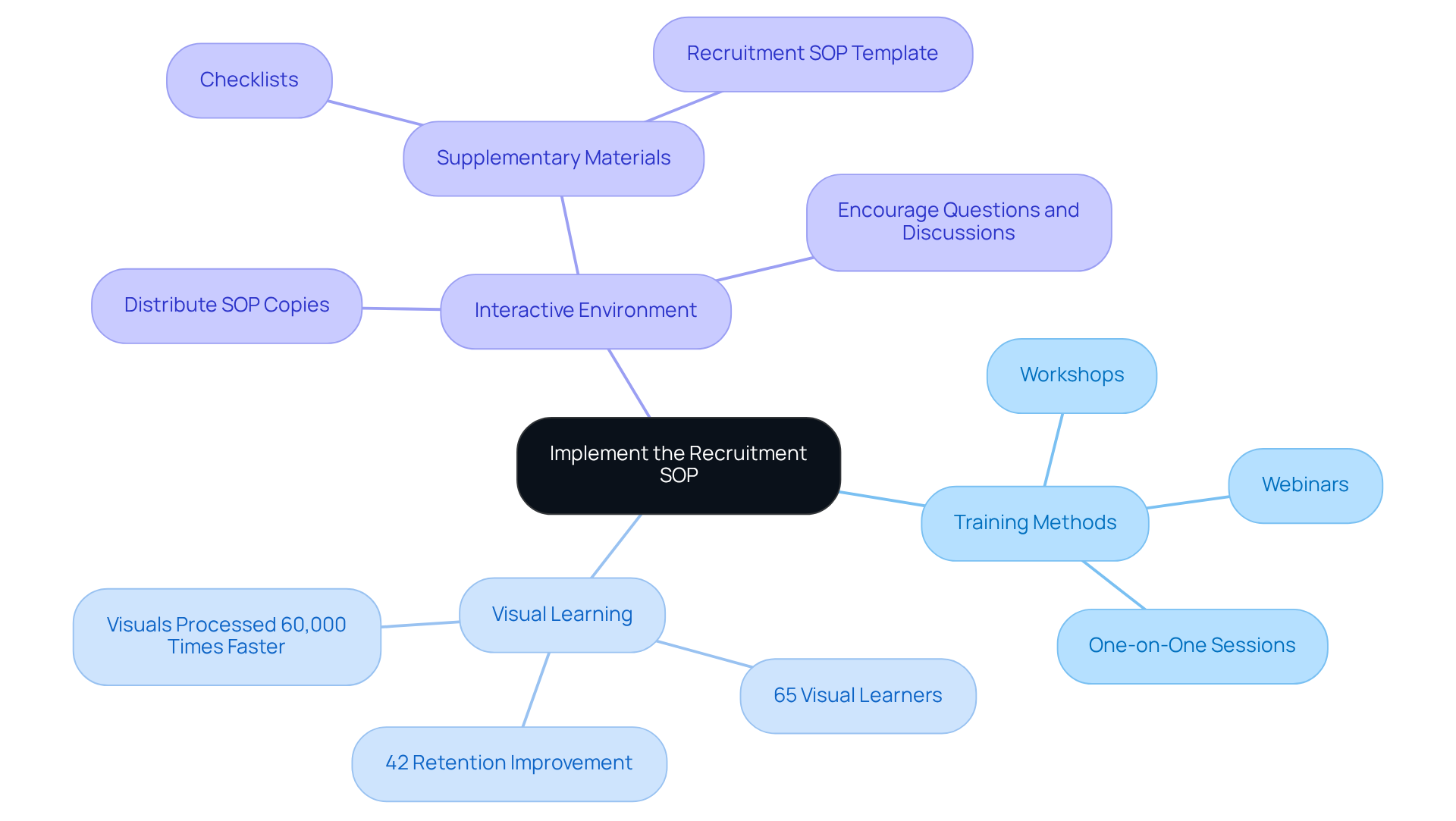
Review and Update the SOP Regularly
You might be wondering how to keep your recruitment SOP template relevant and effective. A great way to do this is by setting up a review schedule every 6 to 12 months, or whenever there are big changes in your hiring process or organizational structure. During these reviews, gather feedback from users and see how well the SOP aligns with current practices and regulations. This proactive approach not only helps you spot areas for improvement but also highlights the importance of being adaptable in your hiring strategies. As Lawrence Bossidy famously said, 'Nothing we do is more important than recruiting individuals.'
Now, let’s dive into the nitty-gritty: document any changes you make and communicate them clearly to everyone involved. Keeping everyone in the loop about the latest procedures is key. Regular updates in your process can really boost effectiveness by following a recruitment SOP template. In fact, organizations that keep their recruitment SOP template up to date often report better candidate experiences and smoother hiring processes. On the flip side, if you neglect to update your SOPs, you could end up making costly mistakes—just ask IBM, which faced a $600,000 error due to outdated practices. By prioritizing regular reviews, you not only improve your processes but also foster a positive culture that attracts top talent.
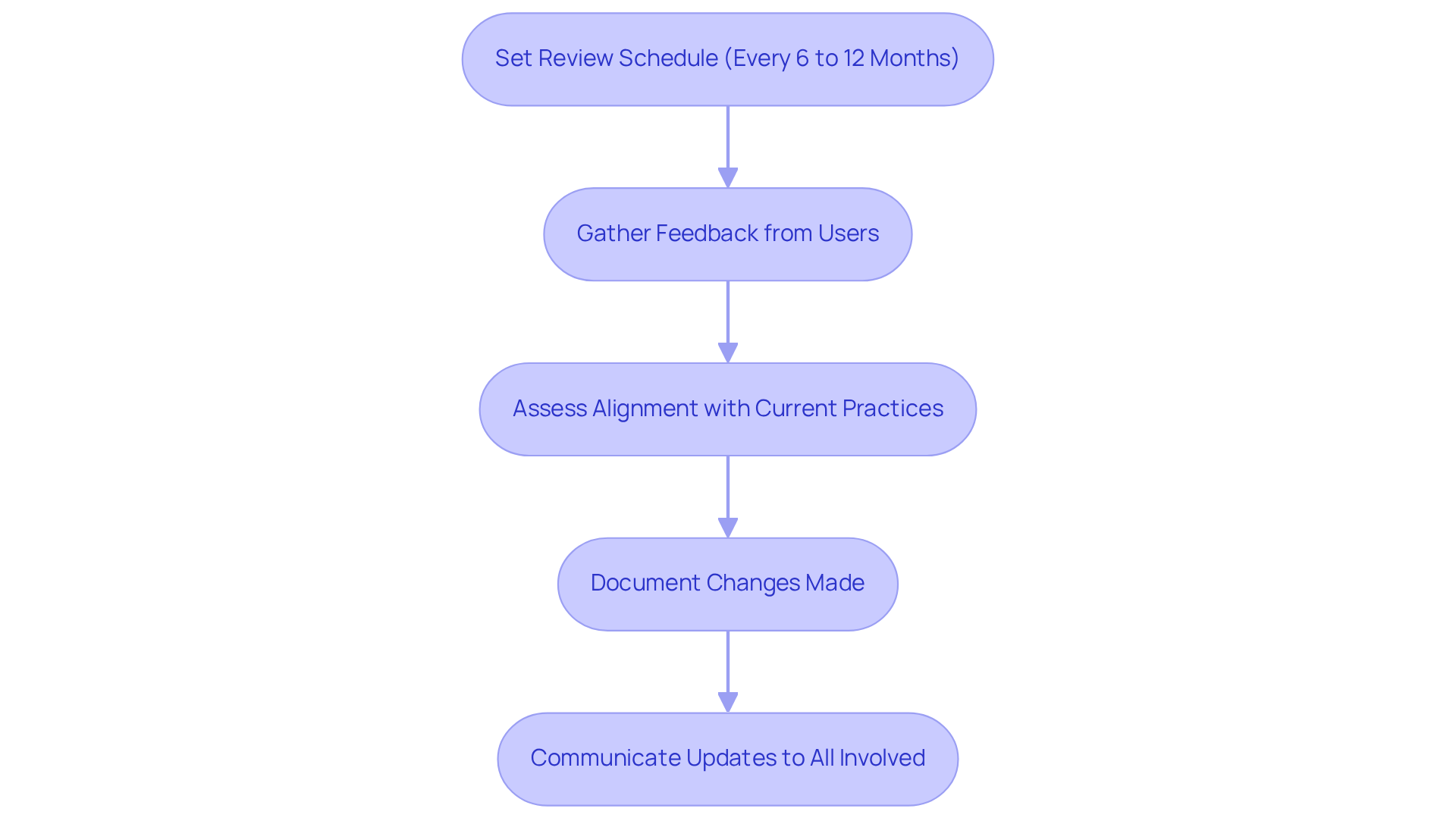
Conclusion
Creating an effective recruitment SOP template is key for organizations looking to make their hiring processes smoother and more efficient. You might be wondering how establishing clear guidelines can help. By doing so, companies ensure their recruitment practices are not only standardized and compliant but also focused on giving candidates a positive experience.
So, what are the key strategies to consider? Throughout the article, we covered:
- Defining the purpose and scope of the SOP
- Gathering the necessary information
- Involving stakeholders
- Writing clear, actionable steps
It’s also crucial to regularly review and update the SOP to keep it relevant—this way, it can adapt to changing organizational needs and best practices. Plus, providing effective training for users boosts their understanding and adherence to the SOP, leading to better hiring outcomes.
In summary, a well-crafted recruitment SOP doesn’t just simplify the hiring process; it also nurtures a culture of continuous improvement and collaboration within your organization. By prioritizing these steps, you can attract top talent and create a more efficient recruitment strategy. Embracing this structured approach will benefit not just your hiring team but also enhance the overall experience for candidates, reinforcing your organization's commitment to excellence in recruitment.
Frequently Asked Questions
What is the purpose of a Recruitment Standard Operating Procedure (SOP)?
The purpose of a Recruitment SOP is to standardize recruitment practices, ensure compliance, and enhance the candidate experience.
How should I define the scope of my Recruitment SOP?
The scope should specify which roles and departments the SOP will cover, such as indicating that it applies to all recruitment processes within the HR department for full-time positions.
What information should I gather when creating my Recruitment SOP?
You should gather existing documents like job descriptions, interview guides, and evaluation criteria, and consult with your HR team and hiring managers about current practices and challenges.
Why is it important to evaluate current hiring documents?
Evaluating current documents is essential for aligning hiring strategies with organizational objectives and identifying areas for improvement.
What are the benefits of using centralized staffing documents?
Organizations using centralized staffing documents can see a 30% boost in employment efficiency and candidate satisfaction.
What tools can assist in creating a Recruitment SOP?
Tools like recruitment management software or a recruitment SOP template can help centralize information and ensure easy access during the writing phase.
👍
What others are liking
5 Steps to outline your ideal documentation structure
5 MINS READ
Where to start the your journey of mapping out your ideal documentation structure, aligning it with the very heartbeat of your organization?
Defining a winning level of detail in your process
3 MINS READ
What is too much detail, and what is too little? This article described in that winning level detail about what detail is enough.





